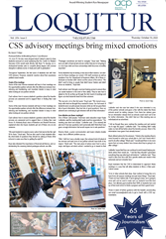“I didn’t know what I was getting myself into, but I knew that it was what I wanted to do.”
Before 18-year-old Devon Bannister graduated from high school, he made a commitment to his country by joining the United States Army.
“I honestly did it for my dad. I knew it was what he wanted,” Bannister said.
More than 90 percent of army recruits have a high school diploma. Many young people who don’t yet know what they want to do see the military as a place to serve and decide what they want to do for the rest of their lives, rather than take a low-paying job or do nothing.
“Maybe they felt like they had no other choice, that they couldn’t get a better job. Maybe they wanted to keep themselves out of trouble and felt that the Army would help them clean up their act or maybe they did it to make someone else proud of them. And of course you always have the ones that simply wanted to serve their country,” Bannister said.
Recruits tend to be much more highly educated than the general public and that this education disparity increased after the war on terrorism began.
Bannister was stationed in Vilseck, Germany, at the Rose Barracks. There, Bannister underwent intense basic training.
“It is definitely a big change in terms of lifestyle but it was easy to adapt to. I learned how to shoot, some tactical techniques and I had to adapt to sleep deprivation,” Bannister said.
Bannister has now been in the army for almost two years. Now 20, he has taken a lot out of the army and transitioned it into his personal life.
“I now live in a foreign country, away from the friends and family that I grew up with. However, I learned to make the best of every situation and I’ve gotten used to the fact that it’s not always going to be easy. Although it hasn’t been easy, I’ve enjoyed getting used to living on my own and taking care of myself. I feel like I’ve grown up and can now take care of myself without worries or concerns. I don’t depend on anyone but myself,” Bannister said.
The racial representation among the recruits has grown tremendously within the last couple of years. Caucasians make up 75.8 percent of the number of recruits. Now 24.05 percent up to 68.63 percent of army recruits have identified themselves as black or Hispanic. Bannister is of Guyanese decent himself.
“A lot of people would think that the army is made up of more white people than any other. There are so many different races in the army that there are even people whose race I’ve never heard of,” Bannister said.
Bannister is now getting ready to go over to Iraq in the next couple of months. He has matured, has a deeper understanding of those who have fought in a war and a better outlook on life. He even jokes that he is a better dresser.
“I feel like maybe I’m not ready to go over and fight a war yet. But I want to because I’ve met a lot of great people here and I don’t want them to go without me,” Bannister said. “I’d like to say that I served my country but I just really hope that I could live to say it.”


